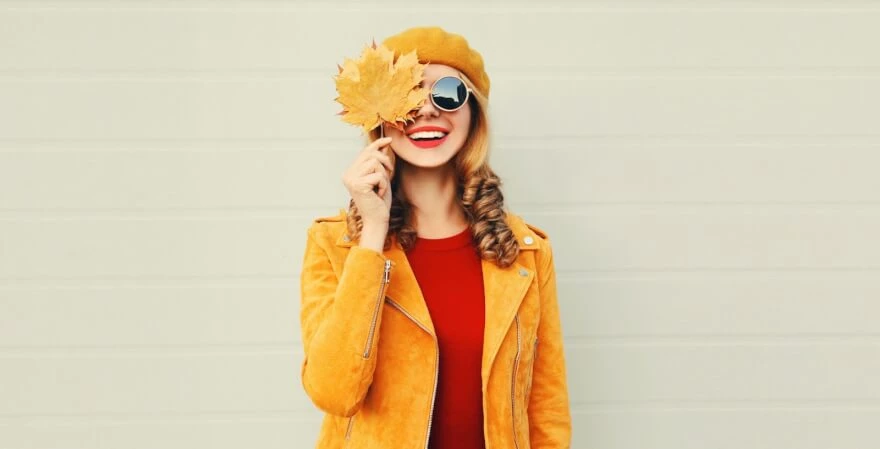Erin Joyce on photography: how to convey mood and atmosphere in photos

- Understanding the Power of Mood and Atmosphere
- Playing with Light and Shadow
- Use natural lighting to your advantage
- Natural vs Artificial
- Nighttime Light and Shadows Play
- Camera flash issues
- Exploring Composition and Framing
- Leading Lines
- Rule of Thirds
- Frame within a Frame
- Foreground Elements
- Use of Negative Space
- Embracing Color and Texture
- Capturing Moments and Emotions
- Post-Processing and Editing Techniques
- Conclusion
If earlier the directional lens of a camera made people freeze and wait for the photographer to capture them in mundane portrait poses , today’s photography has become an integral part of our lives which in turn opens a whole landscape to capture candid images. And to be such, a camera should always be at hand to capture interesting moments while they go naturally. Introducing a camera into an environment invariably alters people's behavior, smiles in photos become forced, and postures change, all to present a polished image for the lens. This acute awareness of the camera often dilutes the genuine atmosphere of the moment. Erin Joyce has truly mastered mood and atmosphere photography breaking this artificial barrier between the camera and the subject. Let's explore the techniques and approaches she uses in her photography to achieve such captivating results.
Understanding the Power of Mood and Atmosphere
The essence of photography often feels contrived, with the camera acting as a barrier between the photographer and the subject. Yet, it's truly remarkable when photographers manage to capture shots that appear effortlessly natural as if the camera's presence was entirely unnoticed.

Mastering the art of making the mood and atmospheric photos is a challenge for many. This difficulty arises not just from mastering the technical aspects and composition but in ensuring the photograph resonates on a sensory level. A successful image transports viewers, evoking the scene's sights, sounds, and scents, and immerses them back into the captured moment.
To achieve that. your aim in photography should candidly lean towards capturing moments, making subjects oblivious to the camera's gaze. This approach yields images that invite viewers to feel as though they're inconspicuously observing the scene. Conversely, photographs capturing subjects directly facing the camera tend to highlight the contrived nature of the moment, detaching viewers from the immersive experience.

However, candid photography isn't always feasible. In such cases, possessing the ability to direct subjects or make them feel at ease becomes invaluable, allowing for the creation of images that, while orchestrated, carry the illusion of spontaneity and authenticity. To achieve that interacting with the subject a photographer wants to establish a strong connection with the subject to unleash the potential of one to act naturally being unaware of the photographer and following the bits of advice.
Playing with Light and Shadow

Lighting is pivotal in defining the ambiance of your photographs. To truly encapsulate the essence of a moment, it's crucial to leverage lighting to your advantage. For instance, the tender glow of a summer sunset provides a soft, orange illumination, casting a radiant outline around subjects basked in sunlight.
Use natural lighting to your advantage
To capture such nuances, consider positioning the sun directly behind your subjects. Automatic camera settings might not handle this well, typically underexposing the shot. Counter this by adjusting your exposure compensation for a brighter result or switching to manual mode to unlock more creative control.

Natural vs Artificial
Utilizing lens flare is another technique to infuse your images with a sense of summer warmth and vibrancy. This effect, often achieved when shooting into the sun, can add an evocative layer of mood to your photos. Many photographers have the lens flare added artificially in the post, however, the natural look is always better.

Nighttime Light and Shadows Play
In scenarios with dim lighting, like the ambient glow from a bonfire or candlelight, shadows can play a significant role in your composition. Directing your subject towards the light source rather than away can dramatically change the photo, highlighting textures and revealing character.

Camera flash issues
When faced with low light conditions, your camera may automatically resort to using the flash, potentially disrupting the scene's natural ambiance. Therefore it is better to opt out of using a camera flash as it provides color temperature changes along with unnatural light direction, considering we rarely look at someone facing the light and have it mostly angled. Instead, you can use the Aperture setting to compensate for the low light.
Exploring Composition and Framing

Conveying mood and atmosphere involves more than mere visual representation, it requires deliberate composition and framing techniques to immerse viewers in the intended emotional experience. Here are 5 specific techniques and their effects.
Leading Lines

Utilizing natural or man-made lines within the scene, such as roads, fences, or architectural features, directs the viewer's gaze towards the focal point, enhancing depth and guiding the narrative flow of the image. This technique can evoke a sense of journey or progression, amplifying the mood of exploration or anticipation.
Rule of Thirds

By dividing the frame into thirds both horizontally and vertically, placing key elements along these gridlines or at their intersections creates a visually balanced composition. This technique fosters harmony and coherence, allowing viewers to engage with the scene effortlessly while amplifying the emotional impact of the subject matter. Can be applied to portraits and landscapes altogether.
Frame within a Frame

Using elements such as doorways, windows, or foliage, to frame the main subject adds layers of depth and context to the image. This technique invites viewers to peer into the scene, creating a sense of peeking or intimacy that intensifies the emotional connection with the subject.
Foreground Elements

Introducing objects or people in the foreground of the shot not only adds visual interest but also enhances the sense of scale and perspective. By anchoring the viewer's gaze and providing a point of reference, foreground elements create a dynamic spatial relationship that immerses viewers in the scene, fostering a heightened emotional resonance.
Use of Negative Space

Strategic placement of empty or minimalistic areas within the frame emphasizes the subject, allowing it to breathe and command attention. This technique imbues the image with a sense of serenity or solitude, eliciting introspection and contemplation from the viewer.
Embracing Color and Texture

Different colors evoke different emotions. Warm colors like reds, oranges, and yellows can convey energy, warmth, and passion, while cooler colors like blues and greens evoke calmness, tranquility, and sadness which can be used for moody photography cases.

Use this knowledge to choose colors that align with the mood you want to create. Lighting conditions both apply to intensify colors and highlight the texture in the shot. Soft, diffused light can bring out subtle textures smooth the skin in a portrait, and create a gentle mood, while harsh, directional light can enhance texture and create drama. The same goes for close-up shots, as they reveal more detail.
Capturing Moments and Emotions

People often show their true selves during interactions with others. Engaged in captivating conversations, they forget about the camera, creating the perfect opportunity for atmospheric photography. Aim to capture moments of laughter, embraces, or even sadness, like a single tear tracing a path down someone's cheek.

Emotions run especially high at sporting events, where the sheer joy or despair of fans and athletes alike is on full display, despite the ubiquitous cameras. Yet, even in these environments, it requires both skill and creativity to spot and foresee these dramatic moments.
Post-Processing and Editing Techniques

- Use photo editing software such as Lightroom or Photoshop to fine-tune colors and textures. Adjusting white balance, applying selective color adjustments, or adding filters can further enhance the mood and atmosphere of the photo.
- Playing with contrast and saturation levels can enhance the vibrancy of colors and make textures more pronounced. Experiment with these settings to find the right balance that suits the desired mood or to highlight the environment and composition.
- Black and white filters applied to photos can also reveal some details that are usually hidden under the colors or textures. B&W photos are made to cut off all the unnecessary and show the essence of a photo.
- Color temperature dramatically changes the atmosphere in the shot, this is why color grading completely changes our perception. Bluish tints may emphasize the horror or sadness while adding more orange tints is good for love stories.
- If you have a hard time achieving specific dramatic effects with color curves and sliders, you can always look for LUTs or color plugins to apply to your photos. These LUTs are usually named in a specific way to explain their assignment. As such you can look up the “Film look” LUT if you want to apply a sense of nostalgia or timelessness to a photo.
Conclusion

Photography thrives on creativity, often bending or breaking the rules. The guidelines we have discussed are designed to spark your imaginative exploration in capturing mood, rather than serving as strict instructions on achieving specific outcomes. By carefully considering color palettes, lighting, composition, and post-processing techniques, photographers can effectively convey mood and atmosphere through color and texture, the environment and composition in their photos, eliciting emotional responses from viewers and creating captivating visual narratives.
Co-founder of RetouchMe. In addition to business, he is passionate about travel photography and videography. His photos can be viewed on Instagram (over 1 million followers), and his films can be found on his YouTube channel.
Moreover, his profile is featured on the most popular and authoritative resource in the film industry — IMDb. He has received 51 international awards and 18 nominations at film festivals worldwide.

with RetouchMe














